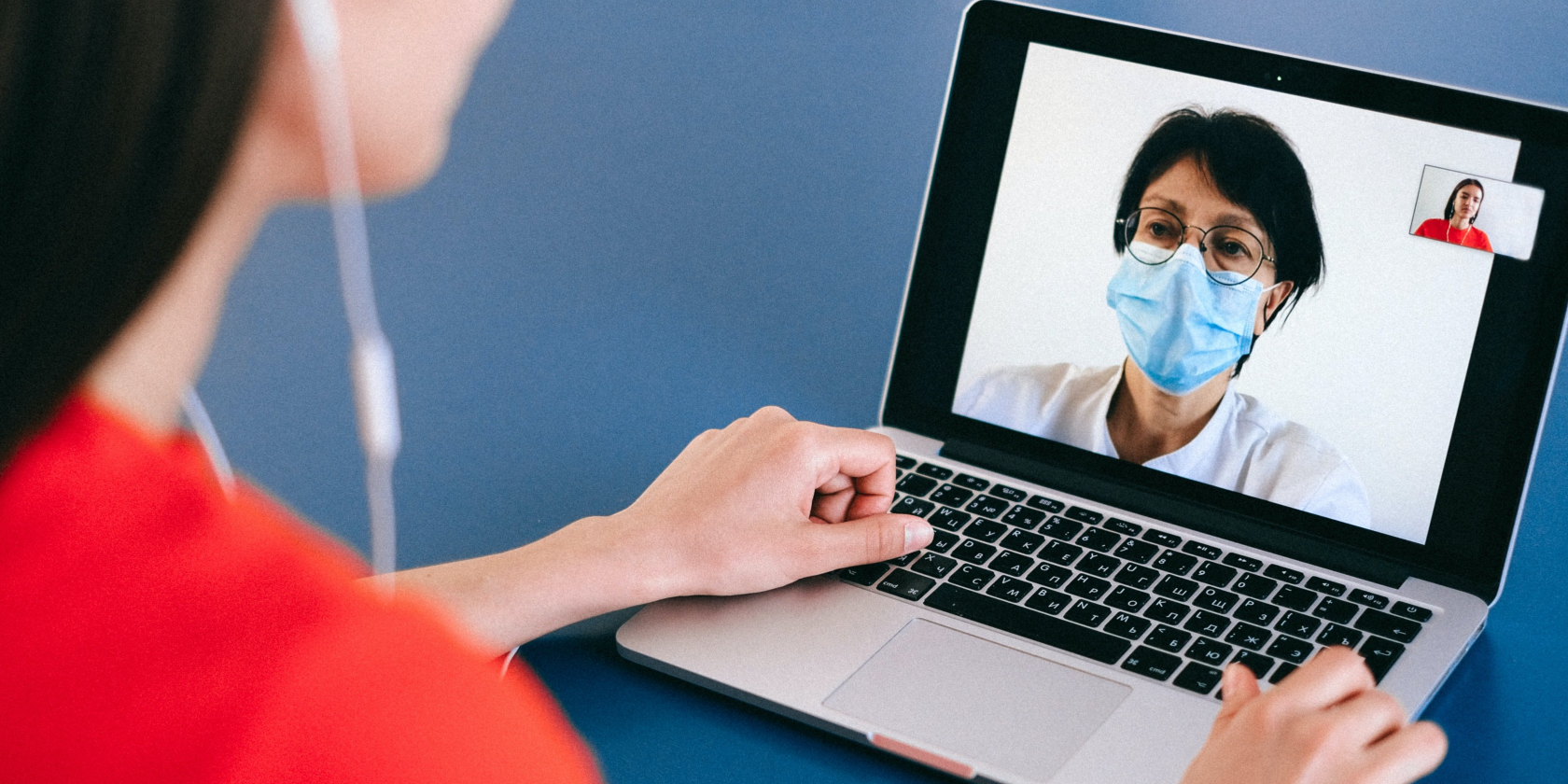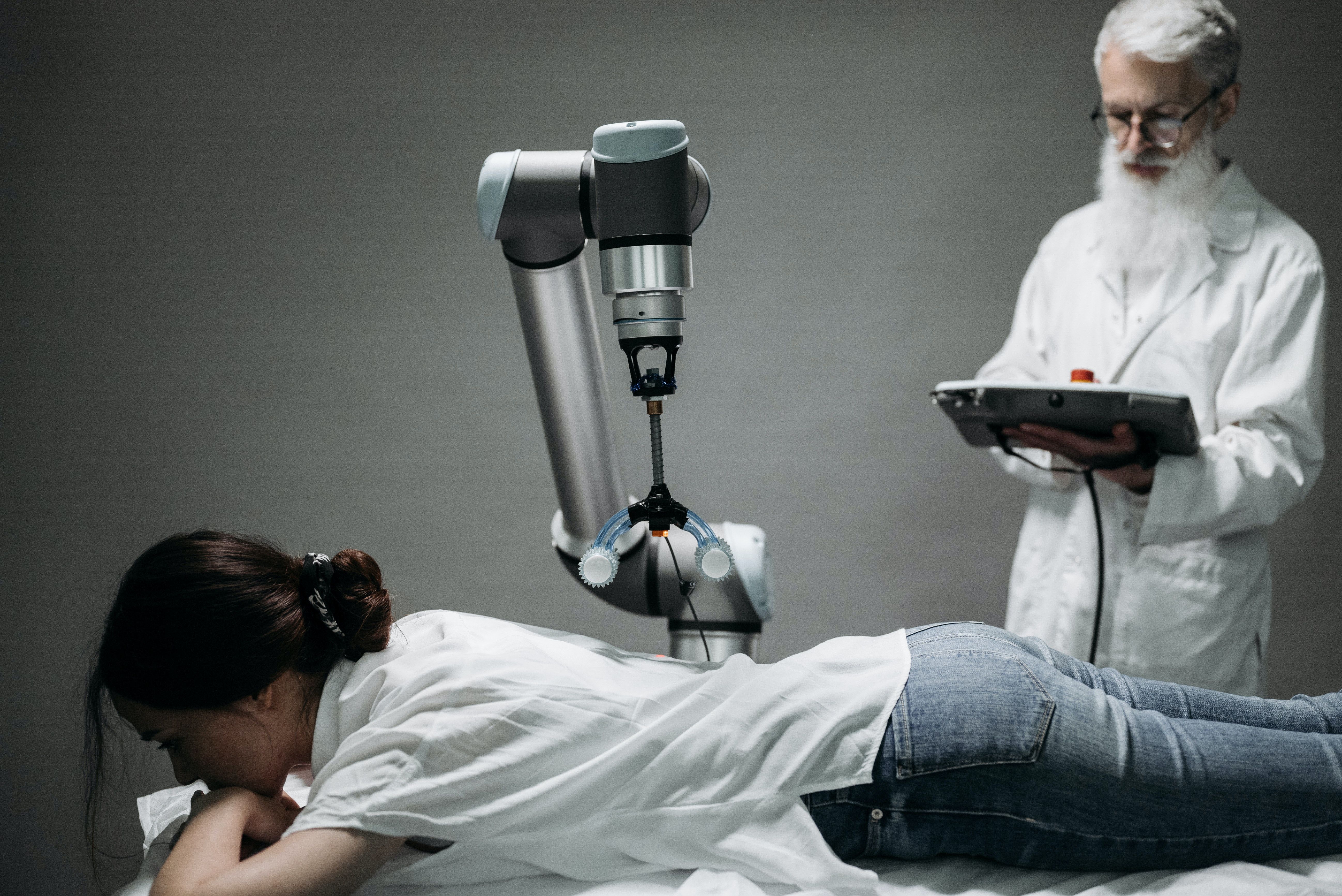Over time, as internet connections improved and bandwidth restrictions decreased, telemedicine began as a way to deliver medical services through audio, text messaging, or video communication technology. The type of medicine practiced through telemedicine can include psychology, dermatology, and even emergency care.
Although telemedicine can improve your wellbeing, it presents both benefits and risks. Let's discuss some advantages and disadvantages of telemedicine that you should consider before putting your health on the line.
The Good: 3 Benefits of Telemedicine
First, let's look at ways that telemedicine can improve the care you get.
Benefit 1: Reduced Exposure to Infectious Illness
You can use telemedicine to avoid exposure to infection and to help control the spread of diseases like COVID-19, severe acute respiratory syndrome (SARS), and the flu. By scheduling an appointment with your doctor using your smartphone, tablet, or laptop, you won't have to go into a hospital or office. This means you'll be less likely to encounter someone else's germs and less likely to spread yours if you happen to be sick.
Reduced exposure is particularly beneficial for those who are immunocompromised, including pregnant women, those with pre-existing conditions, and the elderly.
In 2021, the U.S. Department of Health and Human Services reported that the use of telemedicine increased 63-fold during the COVID-19 pandemic. This allowed healthcare practitioners to continue to support patients even amid a global pandemic.
Benefit 2: Family Connections
Sometimes going into the doctor's office can be an uncomfortable experience, especially for serious medical conditions. For this reason, the second benefit of telemedicine is the ability to receive help from family members while accessing health services.
This includes the ability to have family members attend a medical consultation, even if they live in a different city from the patient. This can be especially beneficial for older adults who may have trouble remembering details. In these situations, trusted family members can help by asking questions on behalf of the patient, remembering instructions, or supplying background information to the doctor about the patient.
Benefit 3: Improved Access to Care
According to the College of Family Physicians of Canada, people living in rural areas are sicker than those in urban settings. One contributing factor may be that while 18% of Canadians live in rural areas, only 8% of all physicians practice in rural communities.
According to a report by the Government of Canada, living in a rural area is associated with reduced access to specialized medical care. Because of the lack of doctors, nurses, and other practitioners, people living in rural settings might not have access to primary care or specialty services, which may affect mortality, life expectancy, and vulnerability in early childhood development.
By using telemedicine, people living in remote or rural regions can access medical support, secure prescriptions, receive diagnoses, and improve their overall health. Telemedicine having a positive effect on your mental wellbeing shouldn't be overlooked.
The Downsides: 3 Risks of Telemedicine
Of course, nothing is without drawbacks. Carefully consider some of these negatives about using telemedicine.
Risk 1: Standard of Care
Standard of care relates to the treatment process a doctor should follow for each patient they see. While some patients may have conditions that can be diagnosed over the phone or via video chat, that's not always the case. The U.S. Department of Health and Human Services suggests that while telemedicine use exploded during the pandemic, more research is needed to understand the impact on the quality of care that patients receive.
In many traditional family practices, doctors see patients in an exam room equipped with basic diagnostic equipment. Telemedicine may sacrifice the standard of care merely by lacking basic diagnostic equipment, such as devices doctors use to take your blood pressure, examine your ear canals, and listen to your heartbeat.
Risk 2: Potential Technical Issues
In the US, healthcare practitioners must ensure telemedicine technology adheres to the Health Insurance Portability and Accountability Act (HIPAA). This legislation is designed to protect your medical records and personal health information. However, during the pandemic, many jurisdictions across the US relaxed regulations to ensure people had access to treatment.
Even when using the best healthcare technologies to improve your wellness, there are risks with any tool that transmits sensitive information over the internet. Website and mobile applications may be designed to protect your information, but the software may contain serious flaws that hackers can exploit, putting your sensitive health data at risk. It's still a debate whether telemedicine is a security risk.
In order to ensure accurate and reliable interactions between doctor and patient, the technical system, including data transfer speeds, needs to be sufficiently reliable. For any record-keeping, doctors—whether they are operating from a hospital, office, or their own home—will need to ensure that adequate security and backup provisions are in place. These will protect patient data loss in case of a security breach or system failure.
Risk 3: Incorrect Diagnosis
Diagnostic errors are still one of the biggest safety issues in medicine, and they can be worsened by telemedicine. A survey conducted by Sykes found that many telemedicine patients express concern about receiving proper treatment or a diagnosis virtually.
During in-person visits, doctors can view potential ailments such as skin conditions from different angles and even touch the body of the patient to conduct a more thorough assessment. Further, doctors not only have access to diagnostic equipment during in-person visits, but they are able to assess the complete person. They can more easily assess a person's body language, manners, and other characteristics such as shaking legs or loss of balance, all of which are indicators that might show a more serious health condition lurking below the surface.
Because of the potential for misdiagnosis, some doctors argue that telemedicine is no substitute for real medical care and should not be used for initial diagnoses, only for follow-ups, or for visits where a detailed physical exam isn't necessary.
As Telemedicine Advances, New Benefits Will Come With New Risks
As technology advances, so will telemedicine. In the future, it may become more common for robotic surgery to take place between a specialized doctor in Singapore and a needy patient in Mexico. However, as the benefits continue to grow, so will the risks.
Whether scheduling a doctor's appointment using your tablet or using an app to diagnose health issues, be sure to understand the benefits and risks of telemedicine before jumping in.



